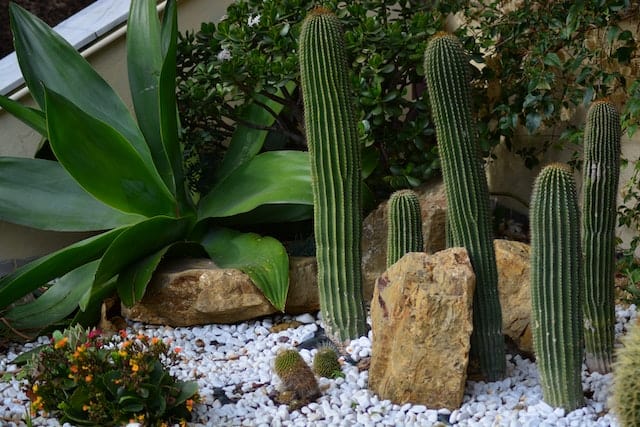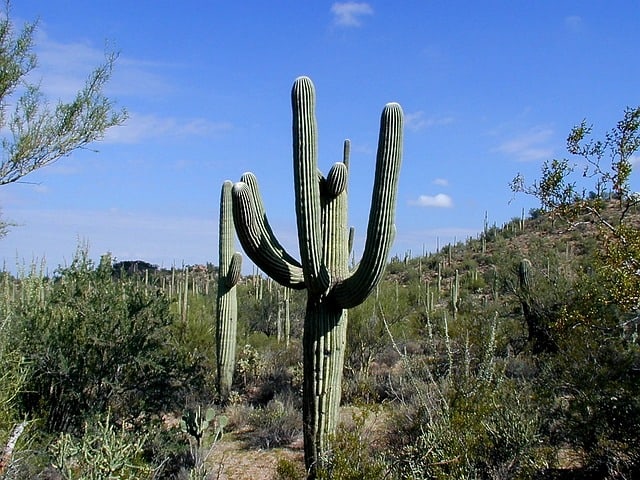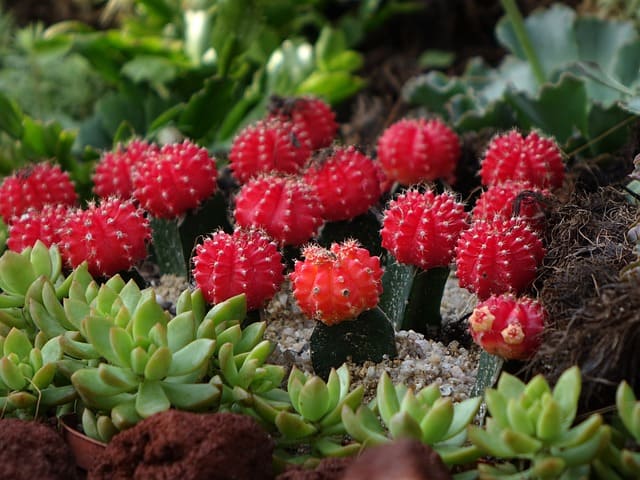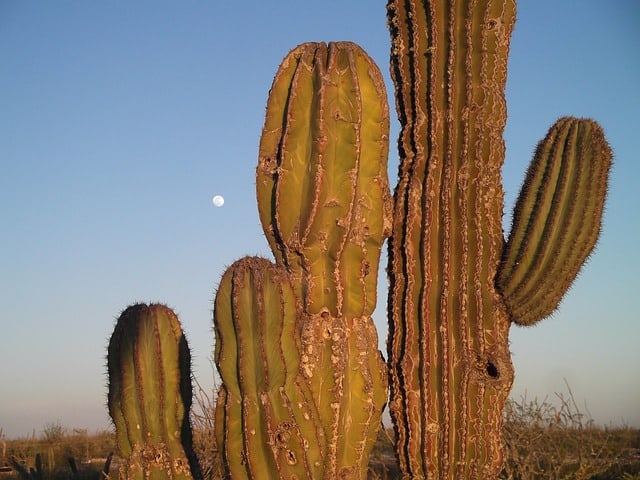Cacti are fascinating plants in various shapes, sizes, and colors. They can live for decades, and some species can even outlive humans. However, determining how old a cactus is can be challenging, as they do not have annual growth rings like most trees.
So how do we determine the age of a cactus? Luckily, there are ways to estimate their age based on their height, size, and growing conditions.
Measuring a cactus is the first step in determining its age. The height of the cactus can give a rough estimate of its age. Cactus stems do not have growth rings, but for every inch of height, it indicates a timeline of 10 years. However, this method is only partially accurate, as factors such as the species, growing conditions, and pruning can affect the height of the cactus.
Determining the age of a cactus requires more than just measuring its height. Factors such as the number of arms, the size of the areoles, and the condition of the spines can also provide clues about its age.
Some species of cacti also have a unique life cycle, which can help estimate their age. Understanding the factors affecting cactus growth, the types of cacti, and exciting facts about cacti can also provide insights into their age.
Key Takeaways
- Measuring the height of a cactus can give a rough estimate of its age, but it is only partially accurate.
- Factors such as the number of arms, the size of the areoles, and the condition of the spines can also provide clues about the age of a cactus.
- Understanding the factors affecting cactus growth, the types of cacti, and exciting facts about cacti can also offer insights into their age.
Measuring a Cactus

When it comes to determining the age of a cactus, measuring it is one of the most reliable methods. Here are two ways to measure a cactus.
Using a Tape Measure
To measure the height of the cactus, you will need a tape measure. Measure from the soil to the tallest point of the cactus body, ignoring the side arms. Record the measurement in inches.
Once you have the height measurement, divide it by 10. The result is an estimate of the cactus’s age in years. It’s important to note that this method is only an approximation and is most accurate for cacti that grow at a steady rate.
Counting the Arms
Another way to estimate the age of a cactus is by counting its arms. However, this method is less reliable since some cactus species can grow new arms at different rates.
To count the arms:
- Start at the base of the cactus and work your way up.
- Count only the mature arms that are at least 3 inches long.
- Record the number of arms and use a cactus identification guide to determine the species.
From there, you can estimate the cactus’s age based on the species’ growth rate.
More giant cacti tend to be older than smaller ones, but growth rates can vary depending on the species and growing conditions. By measuring the height and counting the arms, you can estimate a cactus’s age.
You will also like these other popular posts in this category:
- Cactus Growing Arms: How to Promote Healthy Growth and Prevent Damage
- Why Is My Cactus Leaning:
- Etiolated Cactus: How to Recognize, Fix, and Prevent It
Determining How Old a Cactus Is
When it comes to determining the age of a cactus, it can be tricky. Unlike trees, cacti do not have annual growth rings that you can easily count to determine their age. However, there are other methods you can apply to know its size.
Counting Growth Rings
While cacti do not have annual growth rings like trees, some cactus species have visible growth rings that can be used to estimate their age.
The primary causes of these rings include temperature variations, rainfall and other environmental factors.
To count the growth rings, cut the cactus stem horizontally and count the rings. Each round represents a year of growth. Unfortunately, not all cacti have visible growth rings, so this method may not apply to all species.
Estimating Age Based on Height
Another method for estimating the age of a cactus is to look at its height. Cacti grow slowly, so their height can tell their age. However, this method is only sometimes accurate as growth rates vary depending on the cactus species and the growing conditions.
For example, for every inch of cactus you measure, it indicates a timeline of 10 years. If you can examine your plant and it’s 3 inches tall, you might have a 30-year-old plant.
In conclusion, while there is no surefire way to determine the age of a cactus, counting growth rings and estimating age based on height can provide some insight into how old a cactus may be. However, it’s essential to remember that these methods may only be accurate for some cactus species and growing conditions.
Factors Affecting Cactus Growth

Cacti are hardy plants that can survive in harsh environments but still require some basic needs to thrive. Here are some factors that can affect the growth of a cactus.
Watering
Cacti are adapted to arid environments and can store water in their stems, but they still need some water to survive. Overwatering can lead to root rot, while underwatering can cause the cactus to dehydrate and stop growing.
The amount of water a cactus needs depends on its species, size, and growing conditions. It’s vital to water cacti profoundly but infrequently, allowing the soil to dry out completely between waterings.
Sunlight
Cacti need plenty of sunlight to grow and thrive. They are adapted to high levels of UV radiation and can handle direct sunlight for several hours a day. However, too much sun can cause sunburn and damage the cactus. Placing cacti in a location with plenty of direct sunlight and providing shade during the hottest part of the day is crucial.
Soil
Cacti need well-draining soil that is rich in nutrients. The soil should be able to retain moisture but not become waterlogged. The soil’s pH level should be slightly acidic, around 6.0 to 7.5. Cacti can grow in sandy, rocky, or loamy soil if it meets these requirements. Use a potting mix designed explicitly for cacti for optimal growth, or mix your own using sand, perlite, and peat moss.
Summing it up, the growth rate of a cactus depends on several factors, including the amount of water, sunlight, and nutrients it receives, as well as the type of soil you plant it in. You can help your cactus thrive and reach its full potential by providing the right growing conditions.
Types of Cacti
Cacti come in a variety of shapes, sizes, and colors. Some are tall and columnar, while others are small and round. Here are some of the most common types of cacti:
1. Saguaro Cactus

The Saguaro cactus is one of the most iconic cacti of the American Southwest. It is a tall, columnar cactus that can grow up to 40 feet tall and live for over 200 years. The saguaro cactus is known for its arms, which can take up to 75 years to grow. These arms help the saguaro cactus to reproduce by providing a place for birds to build their nests.
2. Prickly Pear Cactus

The Prickly Pear cactus is a flat, round cactus covered in spines. It is found throughout the Americas and is known for its edible fruit. The fruit of the Prickly Pear cactus is high in vitamin C and can be used to make jelly, syrup, and candy.
3. Moon Cactus

The Moon cactus is a small, colorful cactus perfect for a household plant. It is two cacti grafted together, with the colorful top cactus providing the chlorophyll that the bottom cactus needs to survive. The Moon cactus is easy to care for and can add color to any room.
4. Opuntia Cactus
The Opuntia cactus, or the paddle cactus, is a flat, round cactus covered in spines. It is found throughout the Americas and is known for its edible pads, called cladodes. You can use the cladodes in various dishes such as salads, stews, and tacos.
In conclusion, there are many types of cacti, each with its unique characteristics. Whether you are looking for a tall, columnar cactus or a small, colorful cactus, there is one for everyone.
Cactus Life Cycle
Cacti have a unique life cycle that adapts to their harsh environments. Understanding the cacti’s life cycle is essential when determining their age.
Seed Germination
Cacti start their life cycle as a seed. Cactus seeds’ germination depends on several factors, such as temperature, moisture, and light. Some cactus seeds require a period of cold temperature to break their dormancy, while others require a warm temperature. Once the seeds germinate, the cactus seedlings start to grow.
Growth and Development
Cactus growth is slow and can take several years to reach maturity. During this time, the cactus will go through several stages of growth and development. The first stage is the establishment phase, where the cactus develops roots.
The second stage is the vegetative phase, where the cactus grows in size and develops branches. The final stage is the reproductive phase, where these succulents develop flowers.
Flowering and Fruit Production
Cacti are known for their beautiful flowers, adapted to attract pollinators such as bees, butterflies, and hummingbirds. These plants’ flowers are usually large and showy and come in various colors, such as red, yellow, pink, and white. After pollination, they will produce fruit. Cactus fruit is edible and is an important food source for animals and humans.
Understanding the cacti’s life cycle is essential when determining their age. Cacti go through several stages of growth and development, from seed germination to flowering and fruit production. By observing a cactus’s growth, flowering, and fruiting patterns, one can make an educated guess about its age.
Interesting Facts About Cacti

Cacti are fascinating plants that have adapted to survive in some of the harshest environments on Earth. Here are some interesting facts about cacti:
1. Oldest Saguaro Cactus
The saguaro cactus (Carnegiea gigantea) is one of the most iconic cacti in the world and can live for over 200 years. The oldest saguaro cactus was estimated to be over 700 years old and found in the Sonoran Desert in Arizona.
2. Tallest Cactus
The tallest cactus ever recorded was a 78-foot tall saguaro cactus in the Sonoran Desert. Meaning it had a lifespan of hundred or thousands of years.
3. Areoles and Spines
Cacti have evolved unique features to help them survive in their environments. One of these features is the areoles, small, round, cushion-like structures that grow on the cactus. Areoles are where the cactus produces its spines, which protect it from predators and help it to conserve water.
4. Shrinking and Purple Cacti
Cacti are also known for their ability to shrink and expand depending on water availability. During periods of drought, cacti will shrink to conserve water. Some cacti also turn purple in response to drought stress, which helps them to absorb more sunlight and produce more energy.
Cacti are fascinating plants adaptable to thrive in some of the harshest environments. Their unique features, such as areoles and spines, help them to survive in their environments, and their ability to shrink and expand allows them to conserve water during periods of drought.
Frequently Asked Questions
How can you determine the age of a cactus?
Determining the age of a cactus can be tricky, but there are some ways to estimate it. One way is to measure its height and divide it by 10. This will give you an approximate age in years. Another way is to look at the number of arms a cactus has, which is sometimes a reliable method.
What are some signs that indicate the age of a cactus?
Signs that indicate the age of a cactus include its size, shape, and the number of arms. Older cacti tend to be larger and have more arms than younger cacti. The color and size of its spines, the size and color of its flowers, and the number of roots can also indicate its age.
At what age do saguaro cacti typically grow arms?
Saguaro cacti typically grow arms at around 50-70 years of age. However, some saguaro cacti may only grow arms once they are over 100 years old.
What is the oldest known saguaro cactus?
The oldest known saguaro cactus is approximately 200 years old and can be found in the Saguaro National Park in Arizona, USA.
Is it possible to accurately determine the age of a cactus without cutting it open?
Unfortunately, it is impossible to accurately determine a cactus’s age without cutting it open. However, some ways to estimate cacti’ age without damaging the plant include measuring its height, counting the number of arms, and looking at its size, shape, and other characteristics.

Hey, I’m Lisa and I’ve been an avid gardener for over 30 years. I love writing, talking and living in the garden! Feel free to connect with me on my socials below


